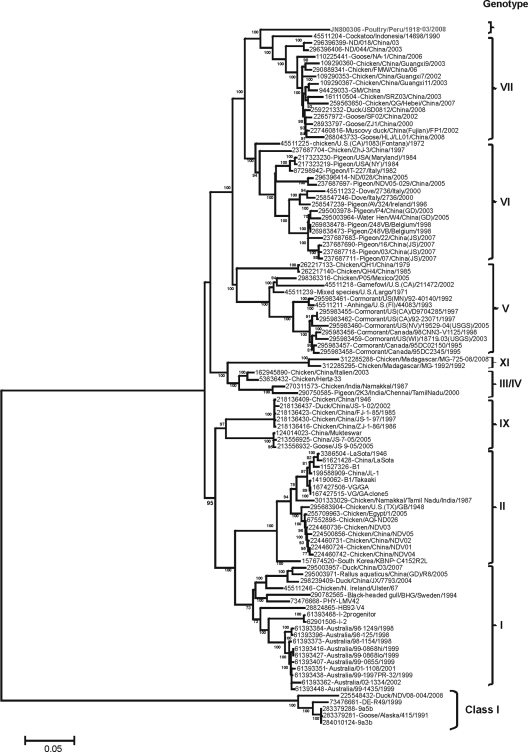Fig 2.
Phylogenetic analysis based on the complete genome sequence of 104 taxa available in GenBank. The evolutionary history was inferred using the neighbor-joining method (24). The optimal tree with the sum of branch lengths of 2.50688796 is shown. The percentage of replicate trees in which the associated taxa clustered together in the bootstrap test (100 replicates) is shown next to the branches (6). The tree is drawn to scale, with branch lengths in the same units as those of the evolutionary distances used to infer the phylogenetic tree. The evolutionary distances were computed using the maximum composite likelihood method (27) and are in units representing the number of base substitutions per site. The rate variation among sites was modeled with a gamma distribution (shape parameter = 1). The differences in the composition bias among sequences were considered in evolutionary comparisons. All positions containing gaps and missing data were eliminated from the data set (“complete deletion” option). There were a total of 15,034 positions in the final data set. Phylogenetic analyses were conducted in MEGA5 (28).

